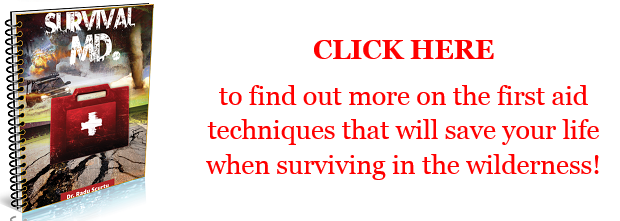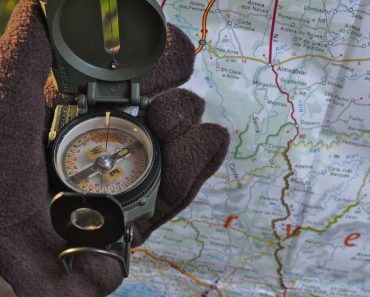When you’re out camping, you’ll need to have some shelter. While it’s possible to take a mobile home or another vehicle to sleep in for the night, the classic camping experience is where you bring your tent and set it up. Fortunately, modern tents have spent a lot of time figuring out how to make them easy to work with.
Here we’ve written a step-by-step guide that should work for all ages. They also apply for tents of all sizes, from smaller models to 4 person tents and even larger. If you’re going with friends or family, you can send this around to help them learn how to set up a tent, too.
With that covered, follow these ten steps to assemble and disassemble your tent.
1. Gather Your Supplies
So, you’ve arrived at your destination. Whether that’s a campsite, a trail, or the middle of nowhere, you should take stock of your camping equipment. You’ll need to gather and pack your supplies before you leave.
When you start assembling your shelter, you shouldn’t unpack things individually. That will take much longer, so unpack everything and keep it together, so nothing gets lost. Take a look at what kind of tent you’ve bought. Most commercial models are either A-frame, tunnel-shaped, or dome-shaped.
2. Lay The Ground Cloth
No matter what kind of tent you’ve bought, you’ll need to lay down the ground cloth. This is a sheet of material that needs to be placed on the floor, where it keeps the dirt, debris, and moisture off of you when you’re in the tent. You can clear your camping area for hours, and there will still be twigs, stones, and insects lying around, so a ground cloth is essential.
3. Assemble The Frame
Tents are free-standing, so they have frames of tubing that keep them upright. Following the instructions given with your tent set, you’ll see how each tube fits together and which shape they need to be. Before you do that, thread the tent poles through the main body of the tent fabric.
Most tent poles slide together, so don’t worry too much about binding the tubes together. Make sure that every tube is used and that the tent frame is structurally sound. Building your tent frame is the most time-consuming part of the tent setup process, so don’t worry if it takes you a short while. If you’re building a tunnel tent, remember that the poles need to be parallel to one another to be usable.
4. Raise The Tent
Many frames are assembled flat on the ground and use joints and other parts to turn rigid when pulled up. If that’s your tent, you should lift the parts of it that’ll give way until the tent is upright and not collapsing in on itself. Most modern tent poles will hold the tent in place. Some might require some extra preparation, like screwing joints in place or otherwise doing something to add to the stiffness and stability of the frame.
5. Hammer The Tent Pegs
So, your tent is taking shape but you don’t want a rogue gust of wind to come along and take it away. Even on flat ground in temperate climates, you should hammer your tent pegs into the ground.
The pegs should come with the tent model, but not all of them are made equal. As a handy tip, check customer reviews for your tent to see if people have complaints about the pegs. If the pegs aren’t great for whatever reason, you can buy stronger ones that do the job without costing too much.
Then you can use a hammer, a rock, or anything hard and easy to hold to bash those tent spikes into the ground. Make sure they penetrate the soil and don’t give when subjected to some movement.
6. Use The Rain-Fly
Rain can strike at any time, which is why almost every tent comes with a rain-fly that you should use. These are sheets of fabric separate from the main body of the tent. They’re often thicker or have been treated to resist water in some way better.
They’re like the ground cloth, except they are laid over the main body of your tent to add extra protection from the rain. Without a rain-fly, you run the risk of water seeping into your tent from the top. Even if you don’t expect rain, it doesn’t take much space to bring the rain-fly along, and it’s better to be prepared!
The tent’s main body will have latches that connect to the rain-fly to hold it in place, where it can then be secured with more tent spikes.
7. Fill Your Tent
At this point, your tent should be close to completion. All that’s left is to fill it with the other equipment you’ve brought with you. How much space you have will depend on your tent and how much capacity it has.
A great rule of thumb is that one person’s gear = one person in standard tent capacity. This means you and your gear would require a 2-person tent while you, a friend, and both your gear would require a 4-person tent, at minimum.
How much equipment you need to store will also depend on how long your camping trip lasts. You’ll need to have more gear to survive a week in the wild when compared to a day, after all.
Gear housed in crates or hard storage can be left outside as long as it won’t buckle under the weather. Also, you should avoid storing food in your tent if you’re in an area with bears. If a bear comes rummaging through your camp, you’ll want them to leave without pestering your tent or trying to gain access to it.
8. Keep The Tent Clean
Now that your tent is in place, you should keep it clean and well-maintained so that nothing goes wrong. Dirty and cluttered tents will be harder to unpack, and you might even damage them with rough-cleaning attempts. The best way to keep your tent fresh and functional is to keep clutter away, clean up after yourself, and don’t tamper with it.
9. Start Disassembling The Tent
Once your camping journey is over, you will need to disassemble the tent. Fortunately, this takes much less time when compared to setting the tent up. After living in the tent for a few days, you should have kept it in good condition so that the poles are still intact and the tent spikes are still driven into the ground.
From there, you should take out those tent pegs. Some can be pulled up with your hand, while others might need some digging around them first. Many campers bring a spade or a trowel to dig around tent pegs when the time comes to disassemble their tent. It’s best to bring hard, metal tools to break tough ground, especially during cold weather if you can boil water. Pouring some hot water on the ground minutes before is a great way to loosen hardened earth and melt away any frost or ice.
10. Finish Disassembling The Tent
Then you should finish disassembling the tent by removing the frame. Once the pegs have been removed, it’s easier to disconnect and remove the poles from the main fabric of your tent. Pull the poles out of the sockets built into the tent fabric and work from the bottom up, starting with the four corners. Remember that tents can be fragile, and establishing the frame was the most time-consuming part of setting it up, so take your time here.
Once you’re successful, you’ll have the same materials you started with when you assembled your tent. Like before, keep them all in one place, so nothing gets lost. You probably brought the tent here in your rucksack or another easy storage solution, so they’ll need to be kept together and wrapped tight.
If you’re the forgetful type, you may want to keep a list of everything you brought with you, including tent parts. Check that list before you leave, so you can sleep comfortably knowing that you didn’t leave anything on the trail.
When you get home, you should store your tent in a dry place. Tents can gather mildew over time due to residual moisture, so avoid this by keeping them dry and sufficiently aired out.




























